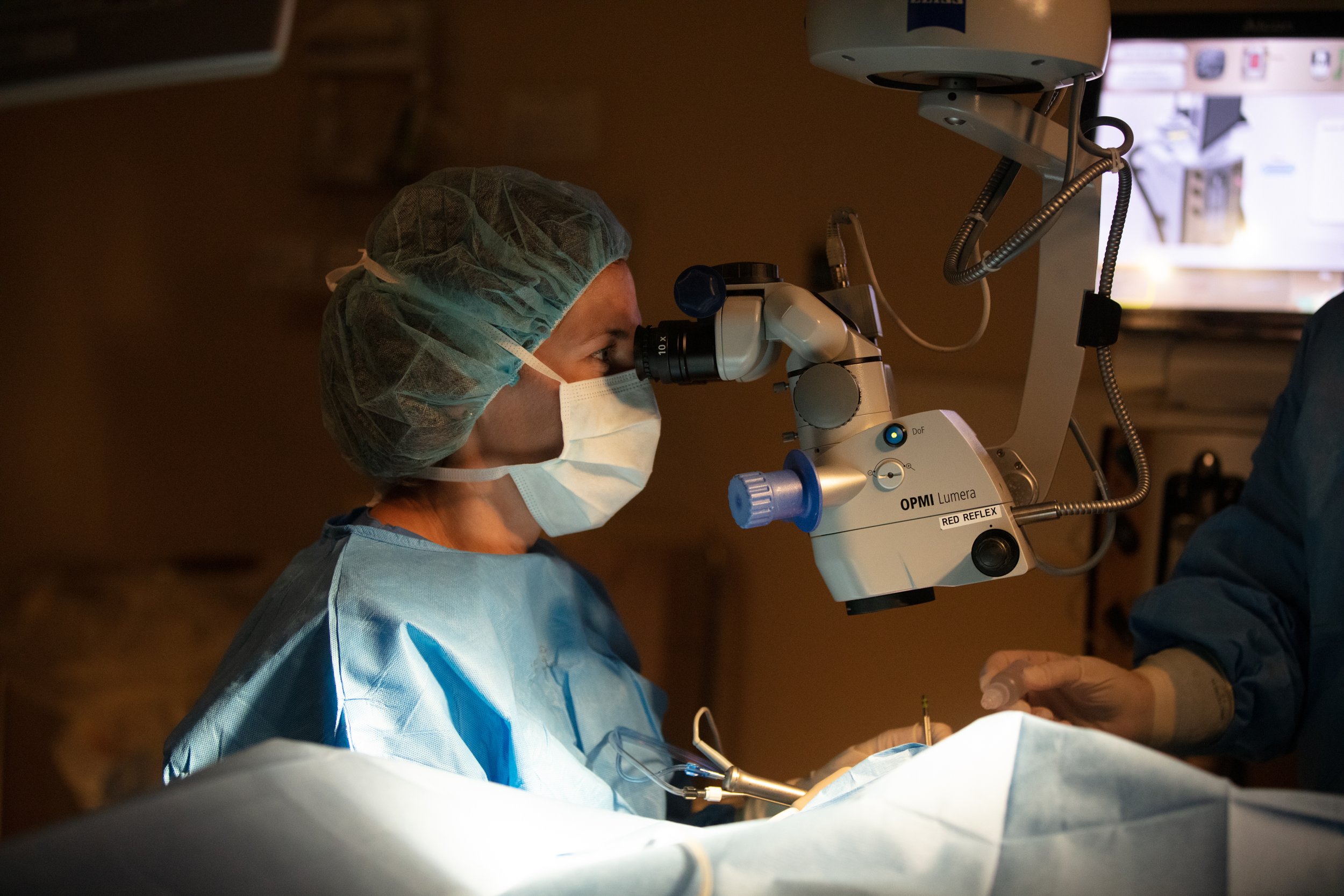
Cataract Surgery
Understanding Cataracts
-
Cataracts are a clouding of the natural clear lens inside the eye and are the world’s leading cause of blindness. Fortunately, they are completely curable with surgery and lens replacement. Cataract removal (phacoemulsification) is the most common procedure performed on Americans over the age of 65.
-
Cataracts are a part of the aging process and often take many years to form or cause symptoms. Trauma, diabetes, poor nutrition, radiation, UV exposure, previous eye surgery, smoking, and certain medications can prompt faster growth of cataracts as well as some congenital diseases or familial predispositions. Birthdays by far are the #1 cause.
-
When a cataract develops, symptoms such as inability to read without additional light, variable blur, altered color perception, poor night/rainy weather vision, glare and light sensitivity, or even doubling of vision in one eye often occur. When the lens becomes opaque and vision is affected enough to interfere with normal daily activities, surgical removal is recommended. The rate of cataract progression varies among individuals and may even differ between the two eyes.
-
A cataract is not a film over the eye, does not spread from one eye to the other, and cannot grow back after removal. We do not wait until the cataract is "ripe" for surgery. Instead, we base timing on visual acuity and how increasing symptoms affect daily living activities including safety for driving. Most age-related cataracts progress gradually over a period of years but some can grow fairly rapidly.
-
The good news is cataracts are completely curable through surgery. The most common procedure in the United States is called phacoemulsification, whereby the cloudy natural lens is broken up into tiny fragments and removed in a water bath, then replaced with a permanent intraocular lens (IOL) that lasts for life and has the ability to focus.
Exciting new lens (IOL) offerings provide options allowing cataract patients to see well at a fixed distance (monofocals), correct astigmatism (torics), or multi-range (multifocals) for relative glasses freedom. Your surgeon may suggest the use of a femtosecond laser to help with cataract preparation before removal.
-
Drs. Volpe, Story, and Story use the latest technology and surgical advancements that make cataract surgery a relatively quick, painless, outpatient experience, often allowing you to return to light activities within a day or two of your procedure. The care and compassion as well as individual attention you'll receive sets them apart. We know you have many good surgeons in Columbia from whom to choose. What you'll find here is a listening ear to help determine your unique needs, while considering your coexisting eye conditions, to achieve your ultimate vision goals.
Helpful Videos
Links to Additional Resources
More information about Cataracts from the American Academy of Ophthalmology

